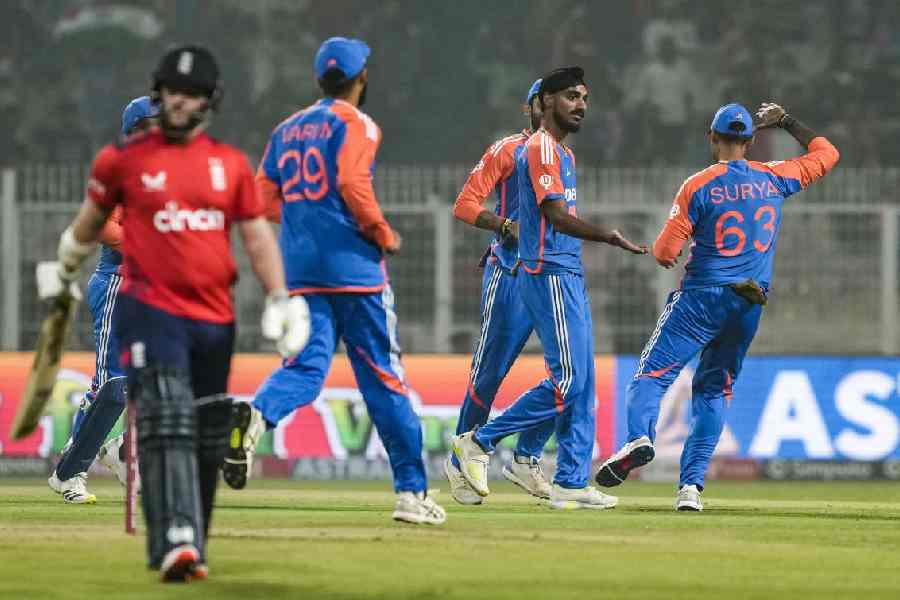India's ranking on the United Nations Human Development Index (HDI) improved by one position in 2022 to 134 out of 193 countries ranked compared to 135 out of 191 countries in 2021.
On the Gender Inequality Index (GII) 2022, India has been ranked at 108 out of 193 countries with a score of 0.437. Its rank was 122 out of 191 countries with a score of 0.490 in the GII-2021.
This shows a significant jump of 14 ranks on the GII-2022 vis-a-vis the GII-2021, the women and child development ministry said.
However, the country also has one of the largest gender gaps in its labour force participation rate -- a 47.8 per cent difference between women (28.3 per cent) and men (76.1 per cent).
After a drop in its HDI value in 2021 and following a flat trend over the past few years, India's HDI value has increased to 0.644 in 2022, placing the country at 134 out of 193 countries and territories in the just released 2023/24 Human Development Report (HDR).
India ranked 135 out of 191 countries in 2021 on the back of a marginal increase in its HDI value to 0.644 compared to 0.633 in 2021.
The data was published in the United Nations Development Programme's report titled "Breaking the Gridlock: Reimagining Cooperation in a Polarized World". It builds on the 2021–2022 Human Development Report findings that saw the global HDI value fall for the first time -- two years in a row.
The report revealed that while rich countries attained record human development, half of the poorest remain below their pre-crisis level of progress.
In 2022, India saw improvements across all HDI indicators -- life expectancy, education, and gross national income (GNI) per capita and life expectancy rose from 67.2 to 67.7 years, expected years of schooling reached 12.6, mean years of schooling increased to 6.57 and GNI per capita saw an increase from USD 6,542 to USD 6,951.
Moreover, India demonstrated progress in reducing gender inequality. The country's GII value of 0.437 is better than the global and South Asian averages, according to the report.
"India has shown remarkable progress in human development over the years. Since 1990, life expectancy at birth has risen by 9.1 years, expected years of schooling have increased by 4.6 years and mean years of schooling have grown by 3.8 years. India's GNI per capita has grown by approximately 287 per cent," it said.
With an HDI value of 0.644, the latest HDR places India in the medium human development category. Between 1990 and 2022, the country saw its HDI value increase by 48.4 per cent, from 0.434 in 1990 to 0.644 in 2022.
India has also shown progress in reducing gender inequality and ranks 108 out of 166 countries in the GII-2022.
"The GII measures gender inequalities in three key dimensions -- reproductive health, empowerment and labour market. The country's GII value of 0.437 is better than the global average of 0.462 and the South Asian average of 0.478," the report said.
"India's performance in reproductive health is better than other countries in the medium human development group or South Asia. India's adolescent birth rate in 2022 was 16.3 (births per 1,000 women ages 15-19), an improvement from 17.1 in 2021," it said.
The ministry said that over the last 10 years, India's rank in the GII has become consistently better, indicating progressive improvement in achieving gender equality in the country. In 2014, this rank was 127, which has now become 108.
"This is an outcome of the decisive agenda set by the government for ensuring women's empowerment through policy initiatives aimed at their long-term socio-economic and political development. The government's initiatives have spanned across women's lifecycle, including large-scale initiatives for girls' education, skill development, entrepreneurship facilitation and safety in the workplace. Policies and legislations in these areas have been driving the government's 'women-led development' agenda," the ministry said in a statement.
The UNDP report notes that inequality across the world is rising again. After 20 years of convergence, the gap between the richest and poorest countries has started to widen from 2020, it said. These global inequalities are compounded by substantial economic concentration.
As referenced in the report, almost 40 per cent of the global trade in goods is concentrated in three or fewer countries. In 2021, the market capitalisation of each of the three largest tech companies surpassed the gross domestic product (GDP) of more than 90 per cent of countries that year.
India's loss in HDI due to inequality is 31.1 per cent. South Asia’s loss in the HDI due to inequality is among the highest in the world (after Sub-Saharan Africa), followed by the Pacific.
"The widening human development gap revealed by the report shows that the two-decade trend of steadily reducing inequalities between wealthy and poor nations is now in reverse. Despite our deeply interconnected global societies, we are falling short. We must leverage our interdependence as well as our capacities to address our shared and existential challenges and ensure people’s aspirations are met,” Administrator, UNDP, Achim Steiner, said.
Except for the headline, this story has not been edited by The Telegraph Online staff and has been published from a syndicated feed.











